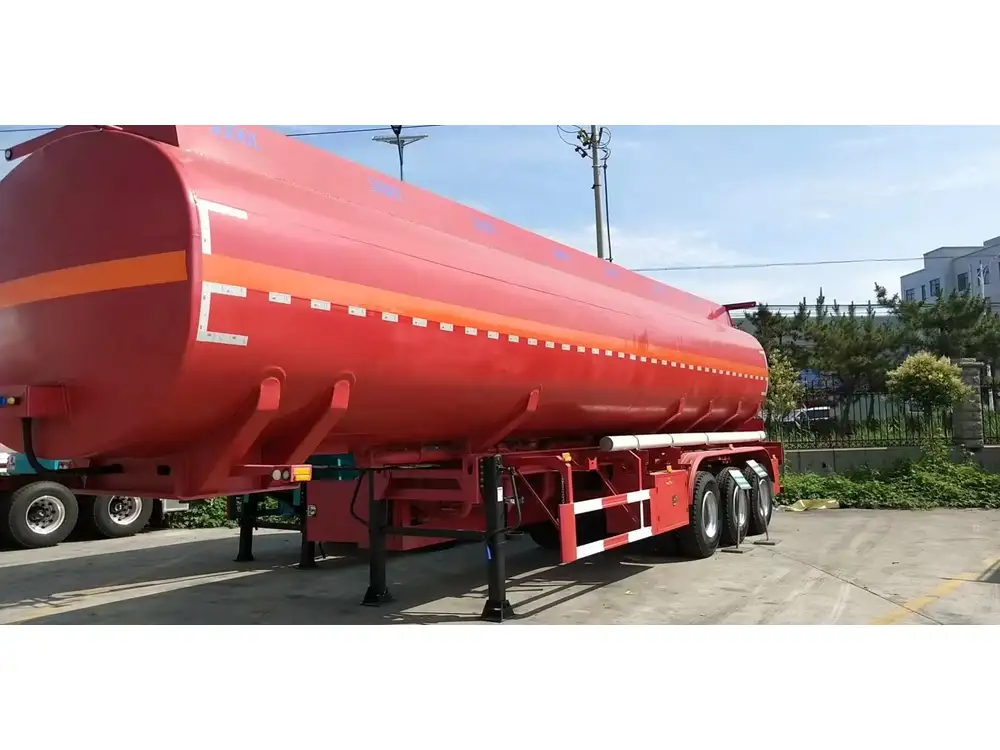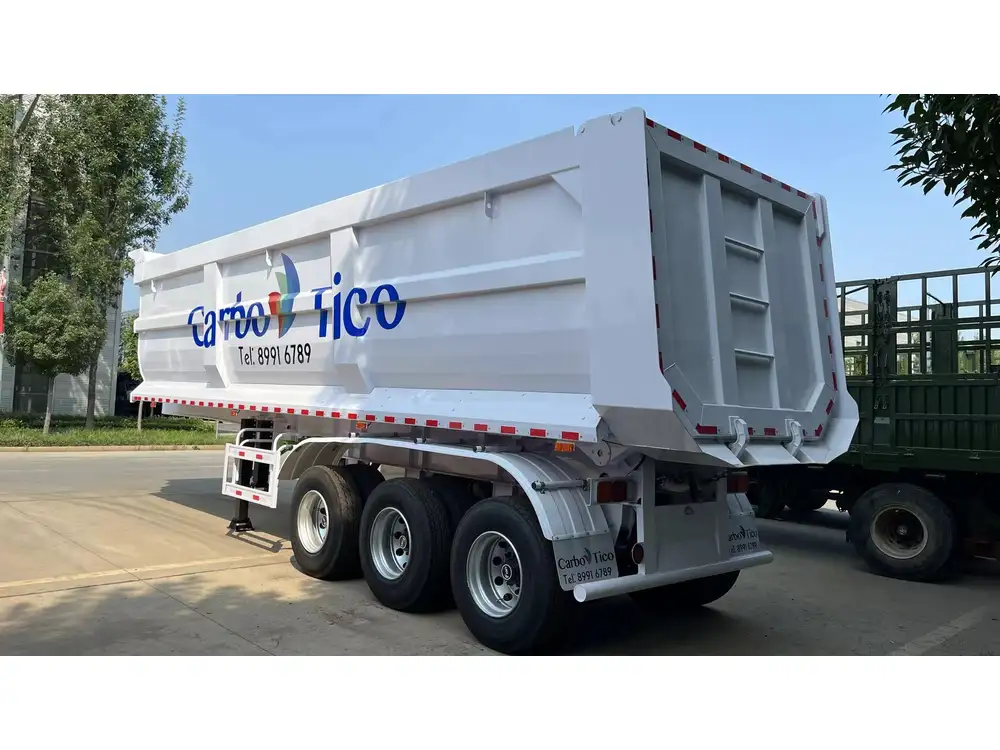What is a Tandem Axle?
A tandem axle, commonly found on semi-trailers, refers to a specific configuration where two axles are positioned closely together. This design enhances the load-bearing capacity of the trailer while allowing for greater stability and maneuverability in transporting heavy goods. Typically, these axles are spaced either within a few feet or tightly coupled, which provides additional support and weight distribution. This setup not only improves overall performance but also enhances safety during operation.
The Importance of Tandem Axle Systems
The significance of tandem axles in semi-trailer manufacturing cannot be overstated. They serve multiple purposes:
- Enhanced Load Distribution: Tandem axles allow for a more even distribution of weight across the trailer, minimizing the risk of overloading a single axle.
- Improved Stability: When navigating uneven terrain or making tight turns, the stability provided by tandem axles reduces the risk of tipping or swaying, fostering a safer driving experience.
- Increased Payload Capacity: With tandem axles, semi-trailers can legally carry more weight than those equipped with single axles, which enhances profitability for transporter companies.
- Better Traction: More tires in contact with the ground lead to improved traction, especially in adverse weather conditions or on slippery surfaces.

Different Types of Tandem Axles
Tandem axles can vary based on their configuration and intended use. Understanding these differences is crucial for manufacturers, operators, and maintenance personnel alike. Below, we explore various types of tandem axles commonly configured on semi-trailers.
| Type of Tandem Axle | Description | Best Used For |
|---|---|---|
| Standard Tandem | Two axles mounted closely together providing stability and capacity. | General freight transport. |
| Lift Axles | An additional axle that can be raised or lowered to take weight off the truck. | Efficient weight management during trips. |
| Sliding Tandem | Allows the axles to be moved forward or backward to adjust weight distribution. | Versatile load adjustments. |
| Fixed Tandem | Axles are permanently fixed in a specific position. | Consistent load scenarios. |
Standard Tandem Axles
Standard tandem axles are the most common configuration found on semi-trailers. This setup typically includes two axles spaced closely to provide a balance between payload capacity and maneuverability. Manufacturers prefer this type for its simplicity and reliability, making it a cornerstone of trailer design.
Lift Axles
Lift axles offer a flexible solution for weight management. By allowing operators to raise the axle when it’s not needed, they can optimize fuel efficiency and adhere to legal weight limits. This type of tandem axle is particularly beneficial when transitioning from loaded to unloaded conditions or when navigating through weight-sensitive areas.

Sliding Tandems
Sliding tandem axles provide unmatched versatility. These axles can be repositioned along a rail system, allowing drivers to shift weight in response to load changes. This adjustability is ideal for mixed cargo loads and can greatly extend the operational capabilities of a trailer.
Fixed Tandems
Fixed tandem axles are designed to remain in a single position throughout their use. Although they lack the flexibility of sliding or lift axles, fixed tandems excel in situations where weight distribution remains consistent, such as with well-defined cargo types.
Benefits of Tandem Axles on Semi-Trailers

Increased Stability and Safety
One of the hallmark benefits of tandem axles is the pronounced increase in stability which they confer to semi-trailers. Enhanced stability translates into safer handling, particularly when cornering or driving over uneven surfaces. A well-balanced load leads to less chance of jackknifing or other hazardous maneuvers.
Enhanced Durability
Tandem axles contribute to the longevity of a trailer. Given their load distribution capabilities, the stress on individual components is reduced, leading to lower wear and tear. This durability can lower maintenance costs over the long run and extend the trailer’s lifespan significantly.
Superior Handling in Adverse Conditions
Operating a semi-trailer equipped with tandem axles allows for better handling in adverse weather conditions. With more tire contact on the ground, drivers benefit from increased traction, which is crucial for maintaining control during rain or snow. This advantage is invaluable for ensuring safety and efficiency in freight transport.

Compliance with Regulations
Tandem axles often play a crucial role in meeting federal and state regulations concerning load distribution and weight limits. By providing an excellent solution for distributing weight appropriately, tandem axles help operators avoid penalties and maintain compliance with transportation laws.
Common Issues with Tandem Axles and Solutions
Despite their advantages, tandem axles can face specific challenges that require diligent attention. Identifying these potential issues early can prevent costly repairs or unsafe driving conditions.
Uneven Tire Wear

Problem:
One prevalent issue with tandem axle trailers is uneven tire wear, often caused by improper alignment or incorrect tire pressure.
Solution:
Regularly inspect and maintain the axle alignment and tire pressure. Conduct routine checks as part of preventive maintenance strategies to ensure even wear. Keeping tire pressure within the manufacturer’s recommended range can also promote even wear patterns.
Suspension Problems

Problem:
Wear and tear on the suspension system can lead to instability and safety concerns when transporting heavy loads.
Solution:
Periodic inspections of the suspension system are essential. Replacing worn components promptly ensures stability and prolongs the useful life of both the axles and the trailer itself.
Weight Distribution Issues

Problem:
Improper loading can lead to excessive weight on one axle, resulting in potential legal issues and unsafe driving conditions.
Solution:
Implement proper loading techniques, ensuring uniform weight distribution across the tandem axles. Utilizing onboard scales or weight monitoring systems can also help maintain compliance and safety.
Choosing the Right Tandem Axle Trailer
When selecting a semi-trailer with tandem axles, several pivotal factors should be taken into consideration:

Intended Use
Understanding the primary purpose of your trailer is crucial. Will it carry heavy machinery, bulk materials, or mixed freight? Knowing this helps determine which type of tandem axle configuration best meets your needs.
Legal Compliance
Ensure compliance with federal, state, and local regulations regarding weight limits and axle configurations. Familiarize yourself with the specific laws relevant to your region and operational habits.
Maintenance Accessibility
Consider the ease of maintenance when choosing an axle configuration. Lift and sliding axles may require more complex maintenance practices compared to standard fixed axles.

Manufacturer Reputation
Choose a trusted manufacturer with a proven track record in producing durable and reliable tandem axle trailers. Research customer reviews and request testimonials to gauge overall satisfaction.
Conclusion
The utilization of tandem axles on semi-trailers is integral to achieving both operational efficiency and safety in freight transportation. The balance they strike between handling capacity, load distribution, and compliance with regulations forms the backbone of modern trailer design. Ultimately, understanding the various configurations and their benefits can empower operators to make informed decisions that enhance performance and profitability.
By investing in the right tandem axle solutions and addressing common issues proactively, semi-trailer manufacturers and operators can pave the way for a smoother, safer transport experience, ensuring they remain at the forefront of an ever-evolving industry.



